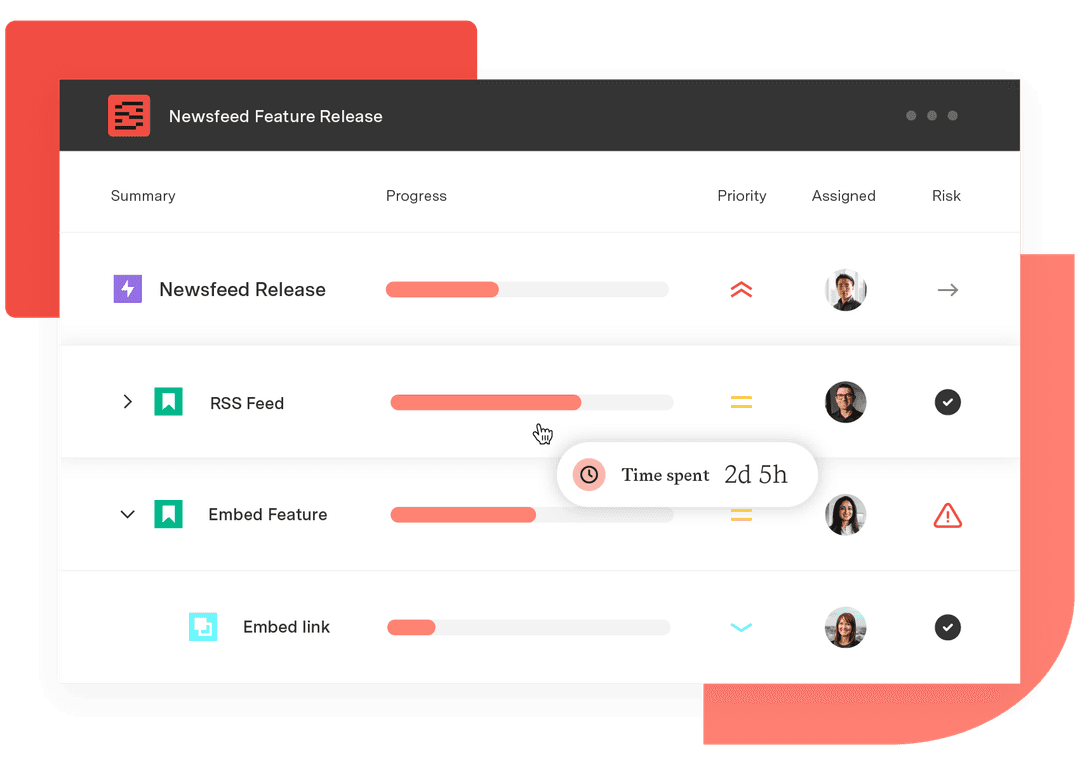How to manage complex programs: Essential capabilities
Tempo Team
Your organization is running five programs at once. Each involves multiple teams, shared resources, and competing deadlines. As the end of the quarter approaches, shifting timelines and overlapping dependencies have put some programs at risk.
As for the executive team? All they want is clear answers about portfolio health and ROI.
Welcome to program management – where the complexity of individual projects multiplies across your entire department. To be successful, you’ll need to do more than scale up project management practices. You need different capabilities that create order from program chaos.
When programs collide
Managing individual projects is challenging enough. When you're coordinating an entire program that shares resources, competes for attention, and influences other outcomes, things can get even more tangled. Resource and priority conflicts become inevitable. Each team’s programs seem urgent.

There are four capabilities needed to enable leaders to make confident strategic decisions:
Create a single source of truth for programs
Ensure consistent delivery processes across teams
Adapt quickly with real-time insights and governance controls
Align resources for maximum delivery capacity
These capabilities work together to create coherence, coordination, and control across projects.
1. Create a single source of truth for programs
Program visibility starts with unified information architecture. Instead of aggregating separate reports, you’ll need integrated views that show how programs relate to each other and contribute to organizational outcomes.
“Tempo’s Program Collection provides a single source of truth that gets teams aligned and reduces complexity. It’s a game changer to have hierarchy views, formulas, and automations that connect every moving part.” – Paulo Bonamigo, Sales Manager at e-Core
This means establishing common data models, processes, and shared vocabulary that work across different program types and team structures. That allows you to consistently capture and roll up key information about progress, risks, resource allocation, and dependencies.
The goal isn't forcing every program into identical processes. It's creating enough standardization to enable portfolio-level analysis while preserving the flexibility programs need to succeed.
A single source of truth eliminates the time spent reconciling conflicting reports. It enables program-level decision-making based on current, accurate information. Most importantly, it creates shared understanding across different stakeholders about program status and priorities.
2. Ensure consistent delivery processes across teams
Consistency doesn't mean uniformity. When you manage different projects, you don't need to do everything exactly the same way. Each project has its own goals, limits, and team members, so they need different approaches. However, some basic processes should be the same across all projects so everything can work together smoothly.
If possible, all projects in your program should use the same methods for:
Planning frameworks
Status- and problem-reporting formats
Risk assessment methods
Resource allocation processes
When everyone uses these same basic methods, it's easier for teams to work together. But teams can still handle their day-to-day work in ways that make sense for their specific project.
Template libraries help new projects get started quickly while keeping everything organized the same way. These templates include:
Preconfigured project structures
Workflow states
Permission schemes
Teams can change these templates to fit their needs, but the basic structure stays the same so all projects can work together. Use governance controls and audit trails to ensure standards are followed and provide visibility into changes and decisions.
3. Adapt quickly with real-time insights and governance controls
Program conditions change constantly. Market shifts alter priorities. Resource availability fluctuates. Dependencies evolve. Successful portfolios adapt to these changes quickly rather than rigidly following outdated plans.
Real-time insights enable rapid response to changing conditions. When you can see emerging problems across your portfolio immediately, you have more options for corrective action. When you can track resource utilization continuously, you can rebalance workloads before teams burn out.
Predictive analytics help you anticipate problems before they occur.
Trend analysis reveals which programs are likely to miss their targets.
Capacity projections show where resource conflicts will emerge.
Risk indicators highlight programs that need immediate attention.
Governance controls ensure programs can adapt within acceptable boundaries.
Clear escalation processes handle cross-program conflicts.
Change approval workflows maintain visibility into portfolio modifications.
Performance thresholds trigger automatic alerts when programs deviate from expectations.
Portfolio governance: Channel developer productivity into business value.
Download the guide4. Align resources for maximum delivery capacity
Resource allocation is the single most critical factor that determines whether a program will succeed or fail. Each team member can only juggle so many tasks. Every budget dollar can only be spent once.
These fundamental limitations make portfolio resource management far more complex than simply counting available people or dollars. Successful management requires a deep understanding of your organization's total capacity and the strategic ability to distribute that capacity where it will create the most value.
This means looking beyond individual team availability to consider skills, experience, and workload distribution. When market conditions shift priorities, how quickly can you reallocate capacity to meet new strategic goals?
Building program management capabilities
You may not be able to implement all of these capabilities at once, but you can outline a path toward program maturity. With each step, you’ll deliver more initiatives successfully. You’ll be poised to adapt to changing conditions quickly and use resources efficiently.
Most importantly, you’ll build stakeholder confidence by providing clear visibility into capacity and priorities. When executives understand what's possible given current resources and commitments, they make better strategic decisions.
Tempo's new product collections provide the foundation for this transformation. When you can create a central source of truth, build consistent processes, adapt quickly to change, and align resources strategically, you're able to turn complexity into a competitive advantage.
Organize and manage complex programs with clear, consolidated views.
See the Program Collection












































